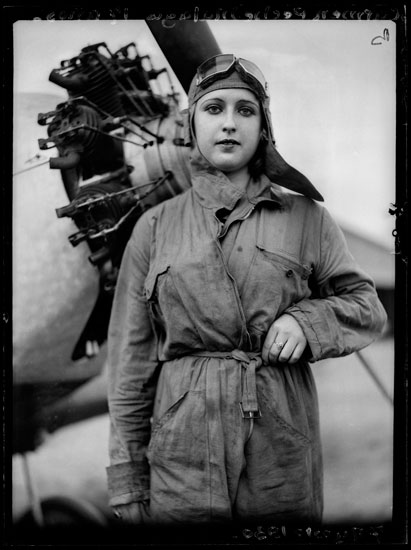Marín
Photographs
Luis Ramón Marín (Madrid, 1884-1944) worked as a press photographer between 1908 and the end of the Civil war. He signed his work with his mother’s surname and belonged to the generation of Spanish photographers who created the profession of photojournalist, based on intuition and hard work. He always lived in Madrid, where he took most of his photographs, although work on many of his photo features took him all around Spain. His beginnings in photography coincided with the birth of the illustrated press in Spain, and the incorporation of photography in printed media. His photographic archive, comprising close to eighteen thousand negatives, mostly on glass, have survived thanks to his family. This project, implemented by Fundación Telefónica in partnership with Fundación Pablo Iglesias, which currently holds the archive, is a chance to see the work of this extraordinary photographer. Between 1924 and 1929, Marín had very close ties with Compañía Telefónica Nacional de España, and was the photographer who contributed most photographs to the documentation project on the introduction of telephony in Spain. Restoration of the Telefónica’s Historical Archive led to the exhibition held in 2005 under the title Transformations in the Gran Vía headquarters of Fundación Telefónica. After years in oblivion, Marín’s photographs have been retrieved for this exhibition and, together with those of his contemporaries, make a unique documentary body of work: an exceptional combination of photographs on industrial, social, urban development and architectural themes. Marín was one of the first photographers to leave the studio and roam the streets, using his camera to capture events. Alongside his contemporaries Díaz Casariego, Claret, Gaspar, Alfonso, Campúa and so many others, he invented the genre of photo-journalism, the profession and the relationship with newspapers. And with them, labour relations, prices and a way of working. They did, in fact, invent a whole new way of life. After 1939, reprisals were taken against many of them, and their archives were confiscated or destroyed, while others abandoned photography altogether. Almost all of them fell into oblivion. The work of Luis Ramón Marín draws the profile of a photographer who lived for what he did, regardless of who he was working for. The variety of content reflects the enormous vitality with wich he went about a multitude of activities. And it was this dynamism which explains his need to mechanise and his attraction towards machines. Marín was everywhere. In a car, motorcycle or airplane, Marín was able to photograph all the significant events of his time, one after the other. The two hundred anf ffity pictures in his exhibition date from throughout the thirty six years during which Marín worked as photographer, and all of the issues which he dealt with throughout his life are represented. The exhibition is intended as a journey through his work and also through his life. In presenting this exhibition in 2007, they pictures are placed in their historical context, filling the gaps in the history of photography in Spain, and in the history of the Spanish press or society itself between 1900 and 1940. We cannot continue to look at these photographs and attribute them only the meaning deriving from the texts which they once illustrated. They sustain, in their own right, a countless number of unfettered discourses that are impossible to control. And all they ask for is space. So it is time for each one to take their place and observe the solitary work of Luis Ramón Marín.



